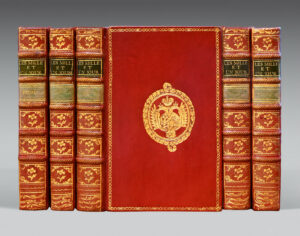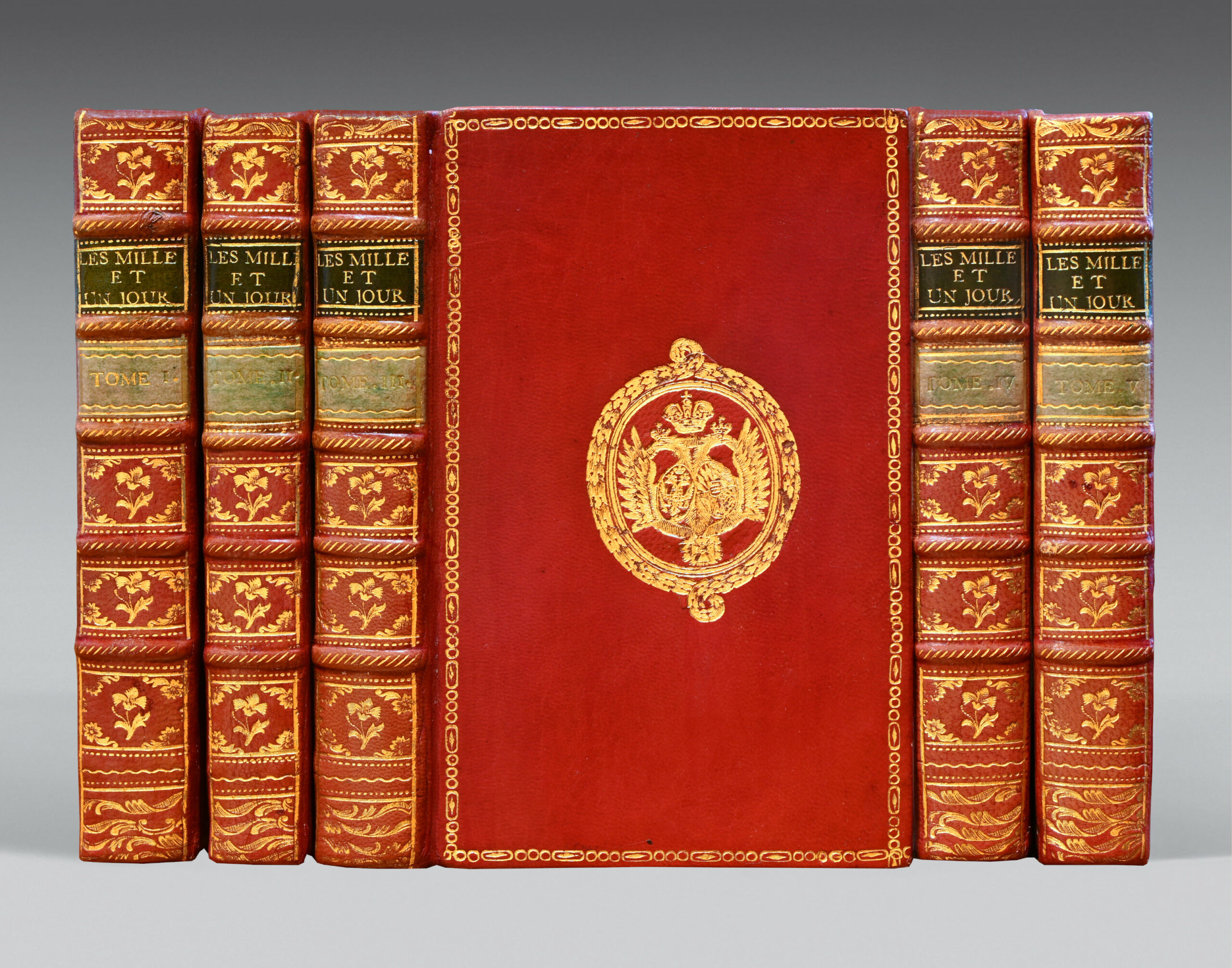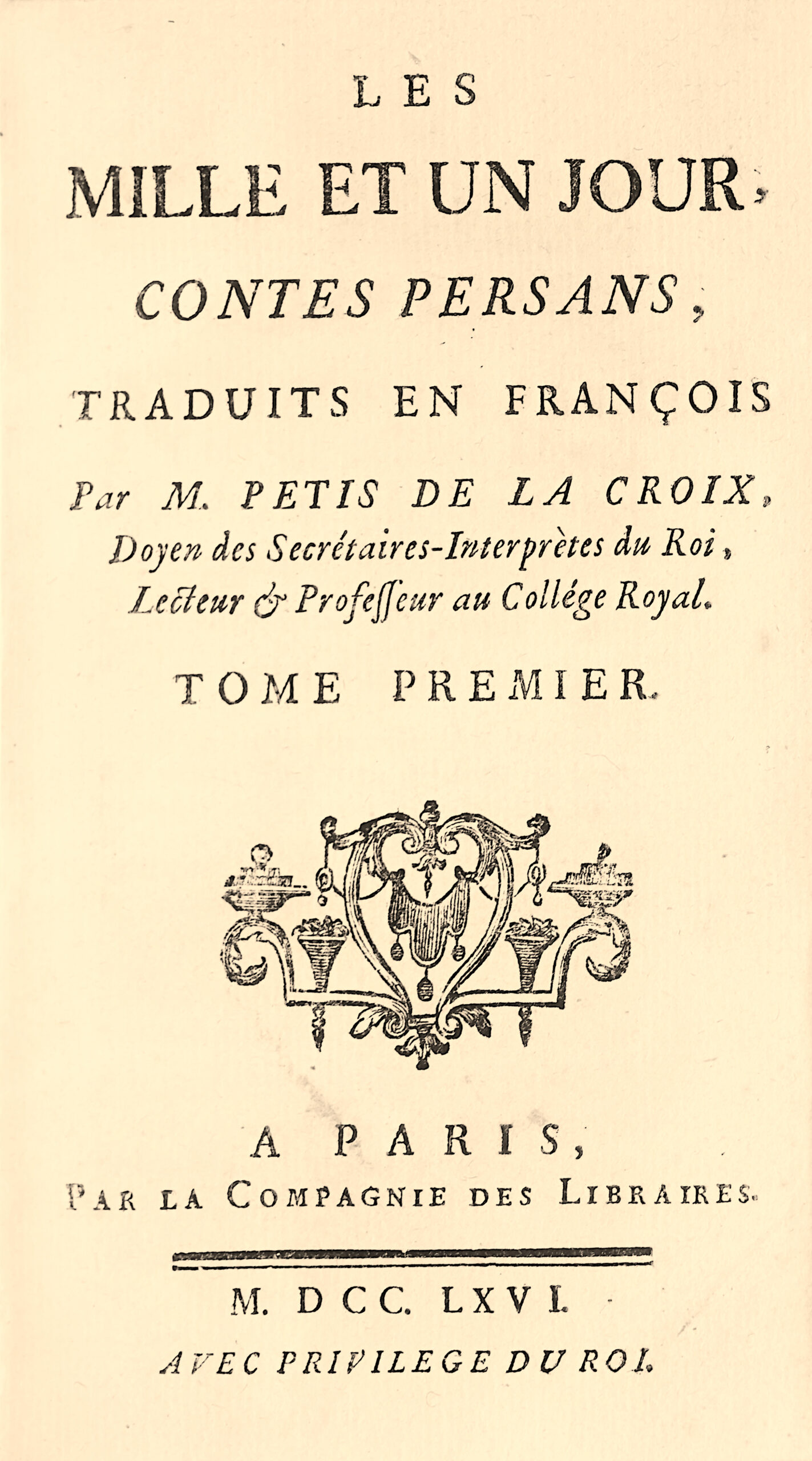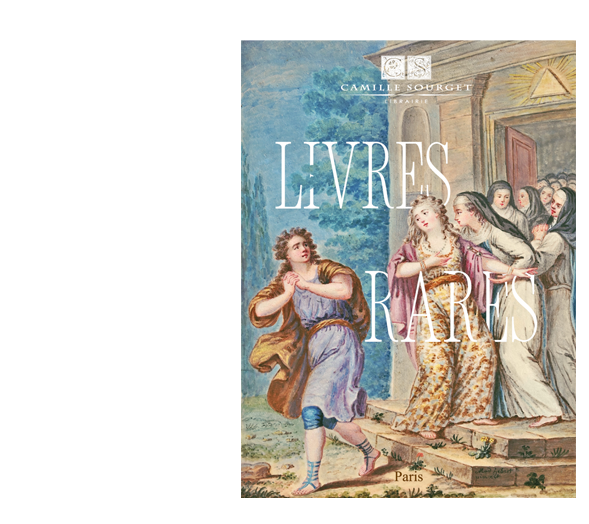Paris, par la Compagnie des Libraires, 1766.
5 parts in 5 volumes 12mo of : I/ 331 pp., (4) pp.; II/ (4) ll., 299 pp., (1) p.; III/ (2) ll., 332 pp.; IV/ (2) ll., 332 pp., (2) ll. of approval and privilege; V/ (3) ll., 350 pp. Red morocco, gilt chain around the covers, arms gilt-stamped in the center, decorated ribbed spines, water-green and fir-green morocco lettering pieces, gilt edges. Contemporary binding.
165 x 95 mm.
Rare edition of these Persian Tales, written in the style of the Thousand and One Nights.
Brunet, I, 17768.
“In ‘The Thousand and One Nights’, it’s a prince warned against women; in ‘The Thousand and One Days’, it’s a princess warned against men”.
Written by the Persian Moclès, who had translated Indian comedies into Persian, they were translated into French by François Pétis de La Croix.
At the age of 16, Pétis de La Croix was sent to the Levant by Colbert.
During a 10-year stay, he familiarized himself with Vulgar Arabic, Literal Arabic, Turkish and Persian. Back in France, he was the King’s official interpreter for all envoys from Constantinople and the Barbary powers. In 1692, he was appointed professor of Arabic and interpreter to the King in Arabic, Turkish and Persian.
“The translator traveled extensively in Africa and Asia by order of the government, and brought back several oriental manuscripts, including the ‘Thousand and One Days’. This work is attributed to Mocles, the famous Persian Dervis, of the race of Mohammed. A Turkish translation of these tales can be seen in the King’s Library, under the title ‘Alfaraga Badal-Schidda’, which means ‘joy after affliction’. The ‘Thousand and One Days’ were translated into English by Philips, in 1738.”
These tales from the “Thousand and One Days” make very pleasant reading, and like our La Fontaine’s Fables, all carry a moral.
“These tales are reproduced in the ‘Cabinet des fées’ and have been reprinted with other oriental tales, Paris, 1841. To give his work the merit of an elegant and easy style, the Orientalist borrowed the help of the author of ‘Gil Blas’”. (Quérard, Les Supercheries littéraires dévoilées).
The refinement of Persian civilization, set against the Jansenism of the court, prevented Pétis de La Croix from translating many of the tales he deemed too erotic.
The present edition is rare.
Precious copy preserved in its contemporary binding with the arms of Maria Feodorovna (1759-1828), born Sophie-Dorothée de Wurtembert-Montbéliard, married to Russian Tsar Paul I, mother of two tsars: Alexander I from 1801 to 1825, then Nicholas I from 1825 to 1855. She played a leading political role.
She had a very fine library containing many works in French, a language she knew perfectly well.
A superb copy from a highly sought-after provenance.



